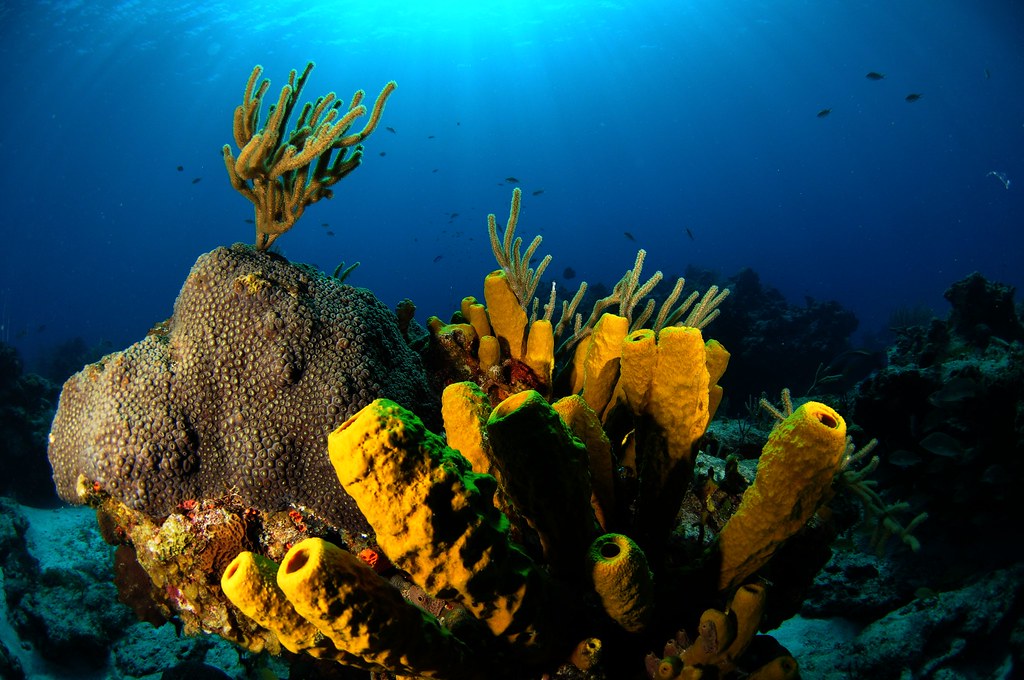You are not going to have much luck with a P&S getting the photos you want. Unless I miss my guess, the photo above was taken with a strobe, a wide angle lens and with the camera in manual mode. Full manual mode is critical to getting shots like the one above. Without getting into too much detail, the forground is controlled by F-stop and strobe while the background is controlled by shutter speed. Without the ability to add lenses and control both aperature and shutter speed, it is difficult to get shots like those above.
That is a lovely photo --but--many P&S can utilize a variety of wet lenses that in some cases exceed the capabilities of DX format lenses, have full manual control of lens opening and shutter speed and flash output and certainly can use external strobes like the amazing Inon D2000 and could certainly take a similar photograph.
To get the background to go that almost purple blue you have to under expose about a stop for the back ground and use the flash to fill for the fore ground but that presents a challenge that strobes like the D2000 were meant to handle to prevent over exposing the fore ground subject.
That shot looks like it was done with a wide angle lens up close to the subject. Of course, it is all easier said than done, thus the skill of the photographer is paramount. I believe that the Canon A620 has full manual, manual flash etc so in theory should be able to do that photo, but, lol, you will need an Inon 100WAL preferably equipped with the Inon dome port. The Inon dome port allows very close focus, literally inches from the dome and the wide angle FOV of 130 degrees allows you to take in the entire subject and the large open blue background framing the subject. I doubt you will get such results with the camera's native lens through the housing flat port.
You need this dome port:
http://reefphoto.com/index.php?main..._id=32&zenid=33ab9051764dba00ecb63237aeb0d6d7
With this lens:
http://reefphoto.com/index.php?main...id=520&zenid=33ab9051764dba00ecb63237aeb0d6d7.
Which is why it is important that the housings accept these lenses such as here on my custom modified Ike/A570:
A little over exposed and a bit blurry due to my shakiness taken within reaching distance of the subject:
Again, over exposed in severely limiting conditions, I should have underexposed another stop, lens is about 6 inches from subject. If I had dropped it off another stop the back ground would have gone emerald green, the fish would not have been so--er--flashy-- and the pink subject would have "popped" better---next time--oh well:
Knowing what to do and actually doing it is the difference between an amateur like me and a talented photog or pro like the photo in the OPs post, but it is not the camera, it is me, my failing. The decreased tendency to blow out highlights that the larger sensors and RAW processing would afford however would be a help admittedly.
N










